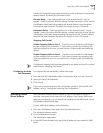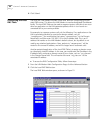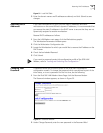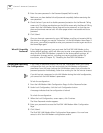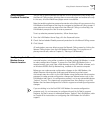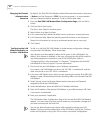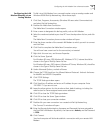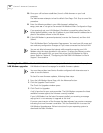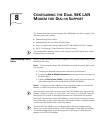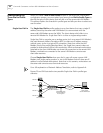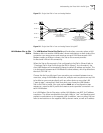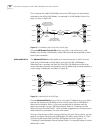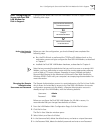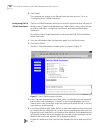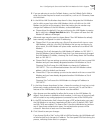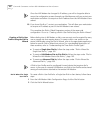
8
CONFIGURING THE DUAL 56K LAN
M
ODEM FOR DIAL-IN SUPPORT
This chapter describes how to configure the LAN Modem for dial-in support. The
following topics are covered.
■ Understanding Dial-in Basics
■ Understanding the Three Dial-in Profile Types
■ Part I. Configuring the Server-side Dual 56K LAN Modem for Dial-in Support
■ Part II. Configuring a Client Device for Dial-out Access
The configuration windows shown in this chapter may differ slightly from what is
displayed on your computer.
Understanding Dial-in
Basics
Setting up the LAN Modem for dial-in support is a two-part process involving the
following main steps:
Part I. Configuring the server-side LAN Modem to receive incoming, dial-in calls.
This includes:
■ Changing the Remote Administration Username and Password
■ Configuring Dial-in Global Parameters (general parameters that apply to
all dial-in calls.)
■ Creating a Dial-in User Profile for each dial-in profile (up to ten) that will
make incoming calls to the server-side Dual 56K LAN Modem.
Part II. Configuring a client device (such as an analog modem or second LAN
Modem) for dial-out access to the server-side LAN Modem
Since the device that dials out to the server-side LAN Modem may also be a LAN
Modem, the terms “server” or “server-side” and “client” or “client-side” are used
throughout this chapter to distinguish between the LAN Modem that receives
dial-in calls (server-side) and the LAN Modem or other device that makes dial-out
calls (client-side). In some cases, the same LAN Modem will be configured as both
a server-side LAN Modem and a client-side device.
The Dual 56K LAN Modem can only accept dial-in calls from another analog
device, such as an analog modem, a 56K LAN Modem or Dual 56K LAN Modem,
or another analog router. It cannot accept dial-in calls from an ISDN terminal
adapter or an ISDN LAN Modem.



